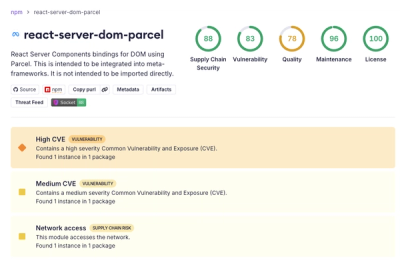graphql-sync-dataloaders
Use DataLoaders in your Python GraphQL servers that have to run in a sync
context (i.e. Django).
Requirements
- Python 3.8+
- graphql-core >=3.2.0
Installation
This package can be installed from PyPi by running:
pip install graphql-sync-dataloaders
Strawberry setup
When creating your Strawberry Schema pass DeferredExecutionContext as the
execution_context_class argument:
import strawberry
from graphql_sync_dataloaders import DeferredExecutionContext
schema = strawberry.Schema(Query, execution_context_class=DeferredExecutionContext)
Then create your dataloaders using the SyncDataLoader class:
from typing import List
from graphql_sync_dataloaders import SyncDataLoader
from .app import models
def load_users(keys: List[int]) -> List[User]:
qs = models.User.objects.filter(id__in=keys)
user_map = {user.id: user for user in qs}
return [user_map.get(key, None) for key in keys]
user_loader = SyncDataLoader(load_users)
You can then use the loader in your resolvers and it will automatically be
batched to reduce the number of SQL queries:
import strawberry
@strawberry.type
class Query:
@strawberry.field
def get_user(self, id: strawberry.ID) -> User:
return user_loader.load(id)
Note: You probably want to setup your loaders in context. See
https://strawberry.rocks/docs/guides/dataloaders#usage-with-context for more
details
The following query will only make 1 SQL query:
fragment UserDetails on User {
username
}
query {
user1: getUser(id: '1') {
...UserDetails
}
user2: getUser(id: '2') {
...UserDetails
}
user3: getUser(id: '3') {
...UserDetails
}
}
Graphene-Django setup
Requires graphene-django >=3.0.0b8
When setting up your GraphQLView pass DeferredExecutionContext as the
execution_context_class argument:
from django.urls import path
from graphene_django.views import GraphQLView
from graphql_sync_dataloaders import DeferredExecutionContext
from .schema import schema
urlpatterns = [
path(
"graphql",
csrf_exempt(
GraphQLView.as_view(
schema=schema,
execution_context_class=DeferredExecutionContext
)
),
),
]
Then create your dataloaders using the SyncDataLoader class:
from typing import List
from graphql_sync_dataloaders import SyncDataLoader
from .app import models
def load_users(keys: List[int]) -> List[User]:
qs = models.User.objects.filter(id__in=keys)
user_map = {user.id: user for user in qs}
return [user_map.get(key, None) for key in keys]
user_loader = SyncDataLoader(load_users)
You can then use the loader in your resolvers and it will automatically be
batched to reduce the number of SQL queries:
import graphene
class Query(graphene.ObjectType):
get_user = graphene.Field(User, id=graphene.ID)
def resolve_get_user(root, info, id):
return user_loader.load(id)
The following query will only make 1 SQL query:
fragment UserDetails on User {
username
}
query {
user1: getUser(id: '1') {
...UserDetails
}
user2: getUser(id: '2') {
...UserDetails
}
user3: getUser(id: '3') {
...UserDetails
}
}
How it works
This library implements a custom version of the graphql-core
ExecutionContext class
that is aware of the SyncFuture objects defined in this library. A
SyncFuture represents a value that hasn't been resolved to a value yet
(similiar to asycnio Futures or JavaScript Promises) and that is what the
SyncDataLoader returns when you call the .load function.
When the custom ExecutionContext encounters a SyncFuture that gets returned
from a resolver and it keeps track of them. Then after the first pass of the
exection it triggers the SyncFuture callbacks until there are none left. Once
there are none left the data is fully resolved and can be returned to the
caller synchronously. This allows us to implement a DataLoader pattern that
batches calls to a loader function, and it allows us to do this in a fully
synchronously way.
Credits
@Cito for graphql-core and for implementing the first version of this in https://github.com/graphql-python/graphql-core/pull/155



